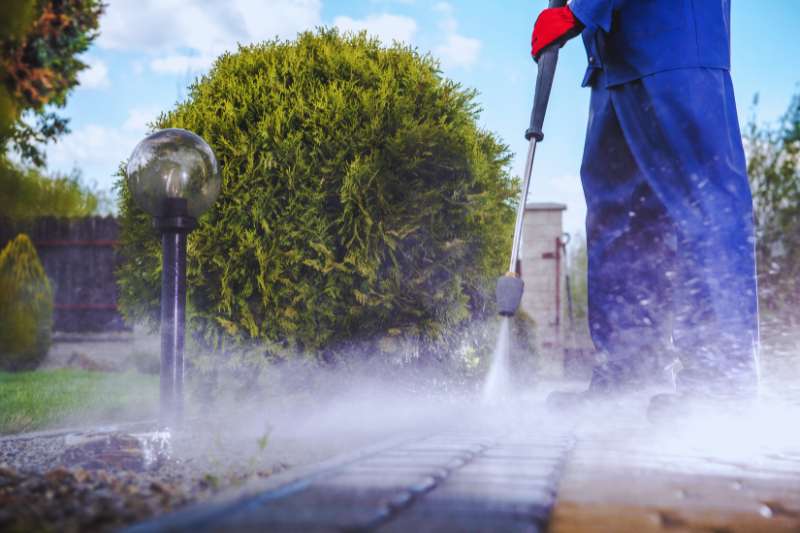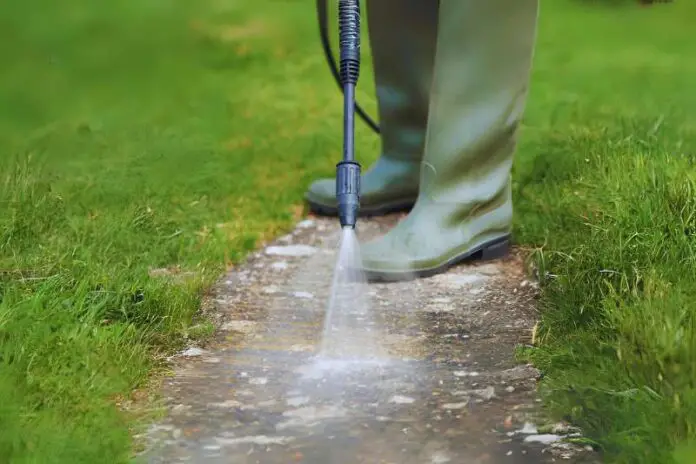Pressure washing tennis courts effectively removes dirt and restores playing surface grip. Regular maintenance ensures optimum playing conditions and longevity of the court.
Pressure washing is a critical aspect of tennis court upkeep, pivotal for preventing hazardous slippery spots and the accumulation of grime that can degrade the surface. This cleaning process not only enhances the appearance of the court, but it also contributes to the safety and performance of athletes.
Utilizing the right equipment and techniques, pressure washing can be done efficiently, keeping the court in top condition for players. It is essential for facility managers and homeowners to include this in their maintenance routine to preserve the quality and extend the life of the tennis court. Properly maintained courts provide a better playing experience and reduce the need for costly repairs.
The Importance Of Pressure Washing Tennis Courts
Regular pressure washing of tennis courts offers numerous benefits. It ensures a clean playing surface, crucial for optimal performance. Players can enjoy a safer game with reduced risk of slipping on dirt or mold. Maintaining traction is vital for the quick movements required in tennis. A clean court also provides an even bounce, essential for a fair match.
Clean courts contribute to the longevity of the surface material. By removing debris and preventing the growth of moss or algae, the surface stays in better condition. This leads to fewer repairs and longer intervals between resurfacing. Investing in regular maintenance saves money over time. The aesthetic appeal of a well-maintained court cannot be underestimated, attracting more players and increasing the venue’s popularity.
Preparing For Pressure Washing
Preparing for pressure washing involves key safety steps. Protective gear is essential. Eye protection and gloves safeguard against high-pressure spray. Footwear with grip prevents slips on wet surfaces. Ensure the area is clear of debris and loose objects. Secure or remove any items that might become hazardous.
Choosing the right equipment is important. Use a pressure washer with adjustable settings. A machine with a psi suitable for tennis courts will clean effectively without damage. Select nozzles that provide even water distribution. Proper equipment ensures a clean court and extends its lifespan.

Step-by-step Pressure Washing Guide
Pressure washing tennis courts demands careful steps. Begin with a low-pressure setting to avoid damage. This gentle approach ensures the surface is not harmed. Gradual pressure increase can follow as needed.
Next, target stained areas with higher pressure. Yet, always keep the nozzle moving. This prevents surface etching. Use a detergent solution for tough stains, applying it evenly.
Finally, ensure a thorough rinse and drying. Proper water removal is key. This prevents water pooling, which can lead to additional staining. Allow the court to dry completely before use.
Eco-friendly Cleaning Solutions
Eco-friendly cleaning solutions are pivotal for maintaining tennis courts. Using biodegradable detergents is essential. These cleaners break down naturally in the environment. They prevent harmful chemicals from contaminating soil and water.
Conserving water is equally important. Techniques such as high-efficiency nozzles help. They reduce the amount of water needed for cleaning. Water reclamation systems can also be used. They capture and recycle water during the cleaning process.
Maintenance Tips Post-washing
Maintenance tips are vital after pressure washing tennis courts. Regular inspections help spot potential issues early. It’s crucial to check for any signs of damage or wear.
Spot cleaning can be necessary for areas that become dirty quickly. Use mild detergents and soft brushes to avoid surface damage.
Seek professional assessments to ensure the court’s longevity. Experts can provide tailored maintenance plans.
Frequently Asked Questions
How Often Should Tennis Courts Be Pressure Washed?
Pressure washing tennis courts typically occurs annually or biannually, but the frequency can increase with heavy use or in areas with lots of debris and dirt.
Can Pressure Washing Damage Tennis Court Surfaces?
If done improperly, pressure washing can cause damage. It’s crucial to use appropriate pressure settings and angles to avoid harming the court’s surface.
What Benefits Does Pressure Washing Offer To Tennis Courts?
Pressure washing removes dirt, mold, and mildew, improving surface traction, aesthetics, and the overall longevity of the tennis court.
Is Diy Pressure Washing An Option For Tennis Courts?
While DIY pressure washing is possible, professional services ensure proper cleaning without risking damage to the court’s surface.
Conclusion
Maintaining a pristine tennis court is crucial for both playability and longevity. Pressure washing stands out as an effective method for achieving this. It’s not just about aesthetics; it’s about providing a safe and enjoyable playing surface. By adopting this cleaning strategy, court owners can ensure that their facilities remain in top condition, enhancing player experience and court durability.
Remember, a clean court is a player’s delight.


